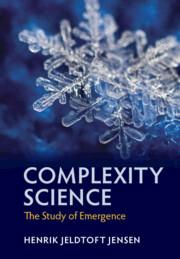The zoology of emergence. In this chapter we listed the following examples of wellestablished classes of emergence:
Question:
The zoology of emergence. In this chapter we listed the following examples of wellestablished classes of emergence:
(1) Characteristic scale.
(2) Collective degrees of freedom.
(3) Transitions.
(4) Networks.
(5) Temporal mode.
(6) Adaptation.
Choose two very different types of complex systems, e.g. the human brain and a biological ecosystem. Now think through the following:
(a) Identify for each of the two complex systems specific instances of the above six examples of emergence.
(b) How can each of the six classes of emergence be interrelated? For example, how may adaptation shape networks within each of the considered complex systems and further, how may the network structure link to transitions, etc.?
(c) List examples of emergence not included amongst the six types listed above.
Keeping in mind the two complex systems you chose above, now think of the following very general questions:
(d) Try to list, from as many different disciplines as possible (biology, economics, neuroscience, etc.), examples of emergence of emergence, for instaance something like the emergence of interaction (competition and cooperation) between companies that themselves are emergent economical structures.
(e) For each of the examples of emergent structures you listed under (d), make lists of intrinsic processes (mainly) operating within the structure and extrinsic processes (mainly) operating between the structures. For example, think of a biological organism. Intrinsic processes within the organism can include transport of nutrition and cell division. Extrinsic processes connecting different emergent structures can be the trophic interaction defining a food web.
Step by Step Answer:

Complexity Science The Study Of Emergence
ISBN: 9781108834766
1st Edition
Authors: Henrik Jeldtoft Jensen





